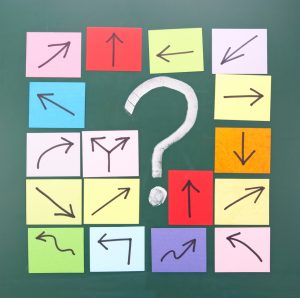How To Plan Your Buyer’s Journey
Regardless of your industry, every buyer goes through a journey when making purchasing decisions. Understanding your buyer’s journey will help you know what information to give them and when.
You can think of the process of choosing what to buy as a journey. It’s the process of going from awareness to purchase. Thinking of this as a journey will help you guide your audience through the awareness or acknowledgment of a problem that they need to solve and how you are the one that can help them solve it.
What Is a Buyer’s Journey?

Your buyer’s journey template is also known as your sales funnel. Your leads enter at the top of your funnel and you guide them through the various options they have available to help solve their problem.
Finally, with the right content and information, you lead them to conclude with a purchase of your product or service. When boiled down to the basics, there are 3 stages to the buyer’s journey.
Stage 1: Awareness
When a buyer comes to the awareness that they have a problem, or they have a desire to pursue an opportunity, this is the first stage. This is when they’ve identified that they have a need, but they have no idea whether solutions exist or not. To find answers, most people go online and use a search engine like Google to find it. This is why it’s important to ensure that your content is easily found.
Focus your website content on providing your target audience with information about the problems that they have. Content can come in many forms, including text, images, video, sound, and data. Use all the types of content that will work at this stage based on your audience’s preferences.
The type of content that is most successful at this stage is educational pieces directly about the problem. It should get their attention so that they want to do more about it. This gives you the opportunity to offer more value (like a report, eBook, checklist), free of charge, in exchange for their email address. Once you have their email address, you can remain in contact with them rather than just hoping that they will return to your website at a later date.
Stage 2: Consideration
At this stage the buyer has realized they have a problem and that there may be solutions out there for them if they could just find them. The buyer usually starts searching for a solution in earnest once they have become sufficiently concerned about their problem. The content you delivered to them in the awareness phase often seems like rubbing salt into a wound, but it’s necessary to help them understand their problem fully and want the solution.
At this point, the buyer wants to evaluate the various options available to them to solve their problem. The content you deliver now can consist of comparison charts, webinars, videos, eBooks, brand guides, podcasts, solution guides, demonstration videos, freebies, and even trial options if feasible to help reduce risks. Offer content that fits in with your goal to help them solve their problem and transform them from leads to customers.
The consideration stage can take some time in the buyer’s journey. Many people research their options for months or even years before deciding. How expensive or life-altering the choice is, will inform how long it takes.
Stage 3: Decision
At this stage, the buyer is aware of their problem and the various solutions, including yours. Now they just need to decide. Most of the time your buyer will be on your email list at this point, although there are cases where they simply explored your website and all the information there. Either way, the buyer wants to make the best choice based on the information they’ve learned.
For this reason, when you’re creating content for all the buying stages, you’ll want to put it all on your website and then re-purpose it for other platforms such as social media. As your ideal customer continues to research after they know they need to make a buying decision, the type of content that you’ll want to deliver to them, and where, plays an important part in guiding them to choose your solution.
The trick is to ensure that you focus on results and your product at this stage. Give them a reason to choose you. Take away their risk and make them want more by going over the pros and cons.
- What makes your solution different? Make sure you differentiate your solution from the others. A great way to do this is to create a comparison chart, pitting your solution against the others and showing how yours fills in all the gaps the others have.
- What other products or solutions are comparable? It might seem odd to tell your buyers at this stage about other products that are comparable, but this helps to create trust. The comparison chart is useful here too.
- What’s the risk? This is your opportunity to reduce their risk. Show how your return policy is better than everyone else’s. Alternatively, give them a promise of a 30-day “no questions asked” refund.
- How long will it take? In most cases people want their problems solved immediately, but you have to be honest. Content delivered here can consist of case studies and testimonials where other customers talk about these issues.
- How much does it cost? They want to know the cost in no uncertain terms. You can list the price of your product, but you can also include other value amounts with the cost, such as what is the cost of not acting versus the price of the product?
- How do they deal with issues and problems with your solution? Make it simple for your audience to find you and interact with you. Don’t hide your contact information.
Free Checklist: Creating An Effective Buyer’s Journey
Understanding the stages of buyer’s journey helps tremendously because it keeps you focused on delivering just what they need when they need it instead of getting off track. It’s especially helpful when creating content and products that educate and serve your audience.
When you create an effective buyer’s journey, or sales funnel, it consistently turns prospects into paying customers if you structure it the right way. To learn more, download my free Buying Process Template which provides an outline sales funnel process for turning leads into prospects and prospects into customers.
